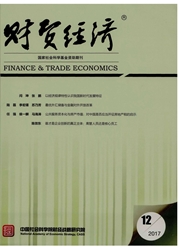

 中文摘要:
中文摘要:
调查数据显示,女性消费者所感受到的通货膨胀要显著地高于男性。原因何在?本文基于微观个体通胀感受模型发现,在“损失厌恶”、“过度自信”、“锚定效应”等心理偏差和“易得性”心理法则的作用下,消费者倾向于高估通胀,而且消费者购物频率越高、经济境况越差、通货膨胀知识越缺乏,则其对通胀的高估就越严重。从而可以推测,女性通货膨胀感受度普遍高于男性的原因可能是:(1)女性经济境况平均来说比男性差;(2)女性购物频率平均高于男性;(3)女性比男性更缺乏通货膨胀知识。进一步基于问卷调查数据和心理实验两种方法进行了实证分析,结果都表明,居民通胀感受所表现出的性别差异确实可以归因于女性和男性在以上三个方面的差异,而不是因为女性生来就具有与男性不同的思维特质。这个结论有重要的政策含义。
 英文摘要:
英文摘要:
A large number of survey data shows that the inflation perceived by women is significantly higher than that of men. And what is the reason? This article establishes a micro inflation perception model. Based on this model we find out that, under the influence of psychological bias including "loss aversion", "overconfidence" and "anchoring effect", and the effect of "availability heuristic", consumers tend to overestimate the inflation. The more frequently the consumers shop, the worse their economic conditions are, and the less inflation knowledge they have, the severer their inflation overestimation will be. Thus, it can be speculated that the reasons why the perceived inflation of women is higher than that of men might be: (1)The average economic conditions of women are worse than men's. (2)Women shop more frequently than men. (3)Men have more knowledge about inflation than women. Further empirical study by means of questionnaire survey and mental experiment shows the different inflation perceptions of men and women can indeed be attributed to the differences between the two genders in these three aspects mentioned above, and that difference is not because men and women are born with different thinking characteristics. This conclusion has significant policy implications.
 同期刊论文项目
同期刊论文项目
 同项目期刊论文
同项目期刊论文
 期刊信息
期刊信息
